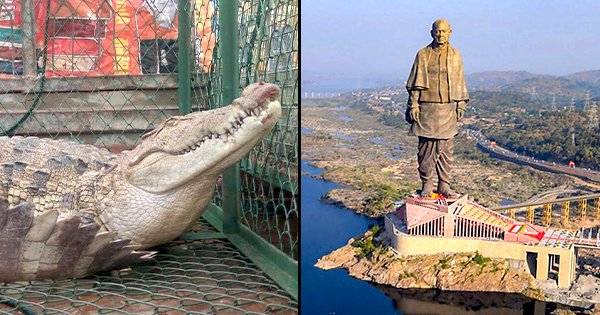Gujarat: Using fish as bait to lure them into captivity, the Gujarat forest department has started capturing crocodiles living in two ponds adjacent to the Sardar Sarovar Dam on the Narmada. This is being done to facilitate the landing of seaplanes to promote tourism at the Statue of Unity site.
The two ponds are home to approximately 500 crocs out of which 15 have been captured so far till last Tuesday, with the largest being 10 feet in length. The mugger crocodiles are one of the most endangered species in the world. Hence the way they are being captured and shifted to a different place has antagonised environmentalists and wild life lovers.
The crocodiles are being removed to build a seaplane terminal which will connect various cities of Gujarat to the place where the Sardal Patel statue has been built. The Gujarat government is doing so to promote tourism in the state.
Deputy conservator of forests in Gujarat, Dr K Sasi Kumar has informed that crocodiles are being ‘rescued’ from the ponds 3 and 4 which are close to the terminal site. The crocodiles were in the custody of the forest department. However now they have been released in the reservoir of the Sardar Sarovar Narmada Dam. “That’s where the others will also be released after their capture as it is their natural habitat,” Kumar was quoted as saying by a section of the media, Saturday.
However, a top official of the Sardar Sarovar, Narmada Nigam Ltd (SSNNL) has contradicted the statement made by Kumar. He has said that so many crocodiles cannot be relocated at one go and hence some other habitat will be needed for their distribution. Unless that is done there is every possibility that the crocodiles may once again go close to human habitats which will spell danger for both.
Dr Jitendra Gavali, who is the director of the Community Service Centre in Vadodara however, has termed the transfer of the crocs from one habitat to another ‘against the principles of the Wildlife Protection Act’. He has said that once released in the dam, the females may not be able to nest and lay eggs and hence the species may face extinction.
Agencies
